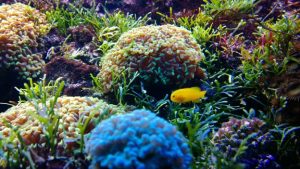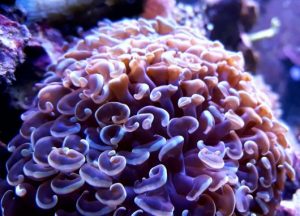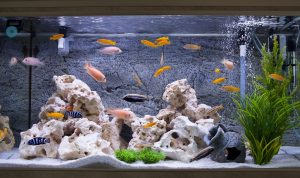We love saltwater reef tanks for many reasons. If you’re planning to have a saltwater aquarium installed in your home soon, we have no doubt that you will be just as entranced as we are. Whether you’re working with Seatech Aquariums or installing the fish tank on your own, it’s important to understand the basic components of a reef tank.
A reef tank is gorgeous, but you need several basic elements to ensure it stays as beautiful as it was on Day One.
Components of a Reef Tank
1. The Tank
It’s important to choose a properly sized tank for the quantity and breeds of fish you will have in your aquarium. You will also have to decide whether you want an acrylic tank or a glass tank.
SEE THE PROS AND CONS OF EACH TYPE OF FISH TANK BEFORE MAKING YOUR DECISION.
2. The Plants
You can use either artificial plants or live plants in your reef tank. There are numerous differences, but here’s the long and short of it. Artificial plants may be easier to maintain, but live plants are prettier, more natural, and possibly offer more health benefits to the ecosystem with the proper maintenance.
READ MORE ABOUT THE DIFFERENCES BETWEEN THE PLANTS.
Whatever you do, including plants in your reef tank is a must for several reasons:
- Improved health of the fish
- More enjoyment for the fish
- Increased security for the fish
- More oxygenation within the aquarium
- Natural filtration of the water

Basic components of a reef tank should include plants and coral.
3. Gravel
Gravel serves as natural filtration for an aquarium. It also traps some of the matter to keep it out of the water. Additionally, some animals like to burrow into it for safety and play.

Include gravel and bottom feeders, such as this Cory Catfish, in your saltwater reef fish tank.
4. Filters
Having a filtration system in the tank is a must. The types of filters you should use depends on the size of your tank, as well as the species and quantity of livestock. There are a wide range of styles and brands, so if you’re not sure which type of filter is best, contact us for guidance.
5. Lights/Heaters
Some saltwater fish prefer cooler water, but others do need warmth. You will also need lighting to beautify the tank and to allow you to see inside. You can buy them separately or purchase one device that provides both heat and light.
6. Coral
The highlight of choosing a reef tank is to be able to add the beautiful coral. Coral aids in the development of a natural environment for fish, and it beautifies the tank like nothing else can. The appearance, quality, and size of coral is as varied as the fish in your tank, but some hobbyists prefer certain types of coral over others.

Much of the beauty of a reef tank is in the coral. Coral such as this Euphyllia Hammer Coral add color and excitement to your underwater community.
SEE WHAT KIND OF CORAL WE AT SEATECH LIKE BEST.
7. RODI Salwater
It’s clear that you need filtered water for the tank. Never, ever use tap water, as the chemicals in tap water can irritate the skin and eyes of your fish. Specifically, we prefer reverse osmosis deionized water for fish tanks, and it’s all we use to fill tanks and clean the tank and decor.
WE BELIEVE IN IT SO MUCH THAT WE WILL EVEN DELIVER RODI SALTWATER FOR YOUR REEF TANK RIGHT TO YOUR HOME WHEN YOU USE OUR ONLINE ORDERING SERVICE.
8. Bottom Feeder
Bottom feeders such as catfish and shrimp can be an intriguing addition to your reef tank.
SOME TYPES OF SHRIMP ARE MORE IDEAL THAN OTHERS FOR A REEF TANK.
Many bottom feeders have unique characteristics and appearances, further enhancing the beauty of your tank. Most importantly, they can help keep the aquarium healthier by eating the algae, leftover food, decaying plants, and natural debris that may be at the bottom of the tank.

Ghost shrimp are among the most popular bottom dwellers and least expensive shrimp for a fish tank.
9. Rock
Whether you choose live rock or dry rock, be sure to include at least one in your tank. Similar to the gravel, plants, and bottom feeders, they serve as natural filters. Additionally, they can provide a place for shy animals to hide and playful animals to play.

Adding live rock, artificial rock, and decor into your reef tank serves several purposes, including beautifying the tank, filtering the tank, and giving the fish a place to play.
Reef Aquarium Installation and Maintenance
Seatech Aquariums can install and design colorful, beautiful, and lively reef aquariums throughout the Phoenix area. We can install the basics such as climate control, filtration, and lighting, as well as beautify the landscape with rock, coral, and livestock.
For more information about our reef tank installation and maintenance services, see our website or give us a call.

TAGS: coral reef, Reef Aquarium, Saltwater Aquarium, Saltwater Fish Tank,








